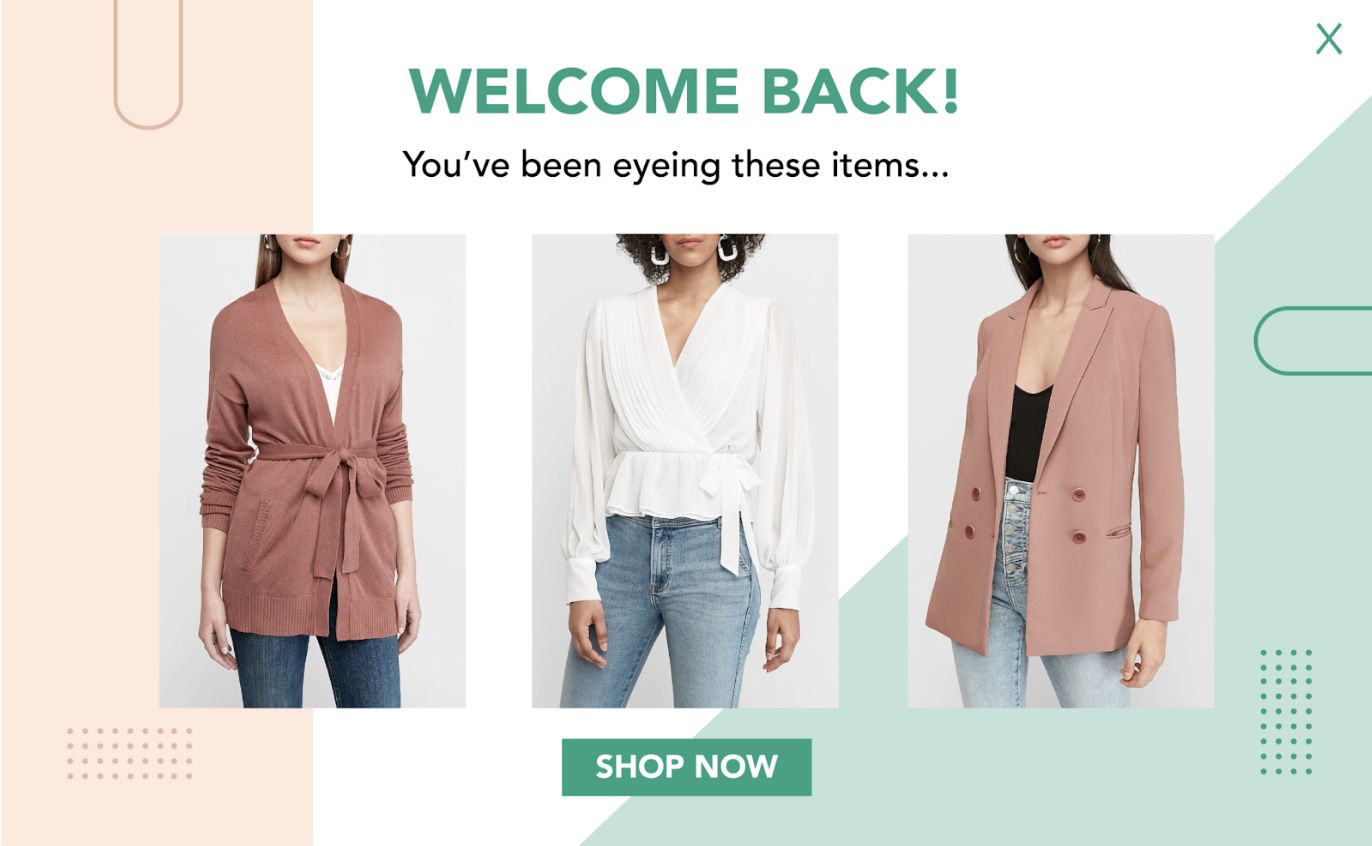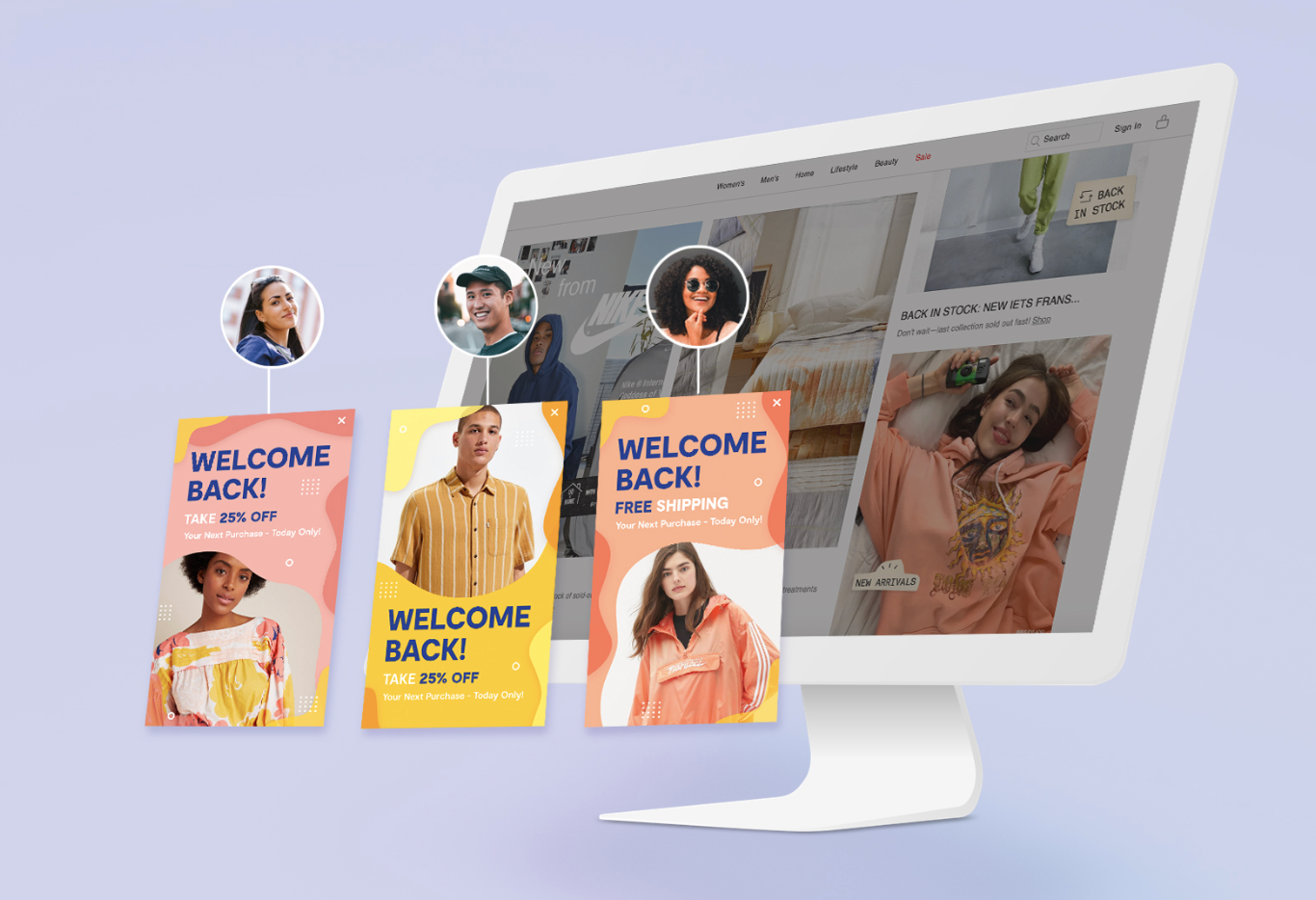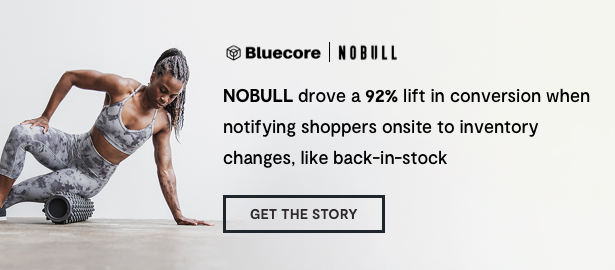
Website Personalization: Everything You Need to Know to Be Successful
Picture this: You spend days building ultra-targeted audiences so that you can send highly personalized emails to your customers. Shoppers who receive these emails get the feeling that you know who they are and what they want, so they click through to your site expecting more of the same. But more often than not, that’s where the personalization ends. They are taken to the same generic page as everyone else. It’s a mismatched experience that falls flat, especially at a time when expectations for personalized customer experiences have hit an all-time high.
In the age of personalization and improved technology, why are retailers still not taking advantage of website personalization?
There are plenty of reasons but like most things, it comes down to time, resources, and general understanding. Website personalization is not as complicated as it sounds and it offers substantial benefits to retailers.
Let’s dig into the basics of website personalization and what retailers need to know to be successful.
What is Website Personalization?
Website personalization is a strategy that allows brands to create individualized experiences for online visitors. This is accomplished by collecting information about a consumer’s needs and interests, then using it to drive a tailored web experience.
A personalized website experience often includes:
- Personalized product recommendations, which use customer, behavior and product data to match certain products to specific customers.
- Personalized hero images, which ensure every page has at least one creative asset that aligns with a viewer’s interests.
- Personalized modals, which can show consumers a highly relevant message or offer that encourages them to take a specific action.
The possibilities of onsite personalization are almost endless. And with personalized marketing becoming the standard, it’s fundamental that retailers do everything they can to deliver highly relevant experiences.

The Benefits of Website Personalization for Retailers
Once upon a time, people went to a local store, found what they were looking for with the help of a store associate and made a purchase. There was no whipping out phones in the store aisles to compare prices with competitors or researching options ahead of time. Today, all of that is a distant memory.
When the only option was the local retailer, the experience was automatically personalized — if you had a question, you asked a store associate and you had a one-on-one conversation based on your needs. Online shopping raised the bar on convenience, but it stripped personalization from the entire experience. And with the explosion of channels on which to reach consumers, it has become harder than ever to get shoppers’ attention to guide them through the purchase funnel. That’s where website personalization comes in and it has a ton of benefits.
- Improved Conversions: Personalization helps narrow the playing field, giving you a leg up when it comes to capturing new shoppers and then converting them into loyal customers. In fact, 80% of consumers say they’re more likely to purchase from businesses that offer personalized onsite experiences.
- Increased Revenue. . BCG and Google found that greater personalization resulted in increased customer spending and brand satisfaction, increasing the number of items purchased, average order values and net promoter scores — leading to incremental revenue growth of 10% or more.
- Increased Customer Loyalty: In a survey of retail martech decision makers, 62% expected benefits like increased loyalty due to personalization. When done right, ecommerce personalization can combine the efficiency of ecommerce with the helpfulness of a personal shopper.
With 48% of shoppers having left a brand’s website and made a purchase from a competitor because of a poorly personalized experience and consumers saying they prefer a personalized experience, it’s clear the benefits of personalization are right in front of us.
Common Challenges with Website Personalization
If it were easy, everyone would do it. That’s how the saying goes right? Onsite personalization can be powerful – but it’s not without its challenges.
Here are three roadblocks that you may run into in your website personalization journey:
- Proper Audience Segmentation – Building audiences can be difficult. Deciding how to segment customers requires plenty of data and a clear idea of campaign goals, which can make it hard to get started.
- Scalability and Efficiency – Personalized experiences require a bit of legwork to create – and this is especially true if a team doesn’t have access to intuitive onsite personalization technology. For example, you’ll need to create several distinct campaigns with varied creative assets, and optimizing these campaigns requires a deep dive into campaign data.
- Measuring Marketing Impact – Personalization is an investment. However, it can be difficult to determine exactly how much your personalization efforts are impacting your bottom line. Engaging in campaign benchmarking can help with this.
Thankfully, as more marketers realize the value of personalization, there are an increasing number of tools designed to help with these exact challenges. To overcome as many challenges as possible, it’s best to choose a tool designed specifically for your industry.
How to Start Your Website Personalization Journey
So how do you actually extend personalization beyond email to deliver a value-added experience for customers? When it comes to a website personalization solution, you need to consider two components: What on the site you will personalize and how you will target different audiences.
3 Types of Onsite Personalization
There are countless components on your site that you can personalize, but it’s important not to overdo it. As you get your feet wet, consider these three potential focus areas:
- Hero images: Change the hero image on your homepage or other landing pages for visitors that fall into certain audience segments.
- Pop-ups, Banners and Modals: Create pop-ups, banners and modals that display personalized offers, messaging and exclusive content and only appear for target audiences. Unlike the previous option, the benefit of these lightboxes is that they can appear on any page, so visitors don’t need to hit a specific page to experience the personalization.
- Onsite Product Recommendations: Help your shoppers discover new products and increase their average cart size by displaying individualized product recommendations based on their behavior on your site and the affinity audiences into which they fall.

Audience Segmentation Recommendations
Arguably the most important piece of personalization is deciding who to target. Again, there are countless different ways to develop targeted audiences to deliver a personalized experience, so it’s simply a matter of deciding where to start based on the data that you have and the approaches that will provide the most value for your company and your customers alike.
The following five audiences are good places to start:
- Category or Product Preference: Target audiences with a strong affinity for a specific category, brand or product by tailoring the product recommendations on the homepage or other pages to include products in which they’re interested or by creating pop-ups that display product recommendations for new arrivals or recently viewed items that are relevant to them based on past behavior or predicted affinity.
- Predicted Customer Lifetime Value: Pinpoint your most valuable customers and create a custom site experience for them by showcasing high-value products, creating banners with special offers to join a loyalty program or adding exclusive customer service lines just for VIPs.
- Discount Preference: Increase your margins by only showing deals to your promo-driven shoppers (or by showing smaller offers to your full-price buyers) with personalized messaging on hero images, banners or pop-ups.
- Lifecycle Stage: Segmenting based on a customer’s lifecycle stage can be highly beneficial. It can help you reactivate at-risk or lost customers through special offers or to encourage non-buyers and one-time buyers to make more purchases.
- Email-Identified Visitors: Target visitors based on whether or not you have their email address so that you don’t keep pestering the ones you do have with email capture pop-ups and so that you can be more aggressive with email collections for the ones you don’t have.
Examples of Website Personalization in Retail
We can give you strategic tips and tactics but sometimes it’s most helpful to see personalization in action.
Personalized Pop-Up Banners
A fashion retailer created customized pop-ups for returning visitors featuring relevant recommendations based on their past browsing behavior. Pop ups are a great way to grab shoppers’ attention and create a more personalized experience.

Dynamic Coupons or Discount Messaging
Dynamic coupons allow you to differentiate offers and messaging for various types of shoppers. They also help you create personalized offers that increase value for both your customers and your brand.

Customer Loyalty Messaging
Have a loyalty program? A well-known beauty retailer creates specialized experiences for loyal customers with unique onsite messaging. This includes discounts, awards status, and even the latest perks.

Creating a Website Personalization Strategy
If you’re pouring time and resources into personalizing your emails only to send customers to a non-personalized site, you’re leaving value on the table as shoppers wonder what happened to the brand that seemed to know them so well. Following the best practices for onsite personalization described here can go a long way toward remedying that mismatched situation.
To prove the power of retail personalization software, look no further than how NOBULL increased customer lifetime value by 30% using onsite personalization to create a cohesive, personalized multichannel experience.






